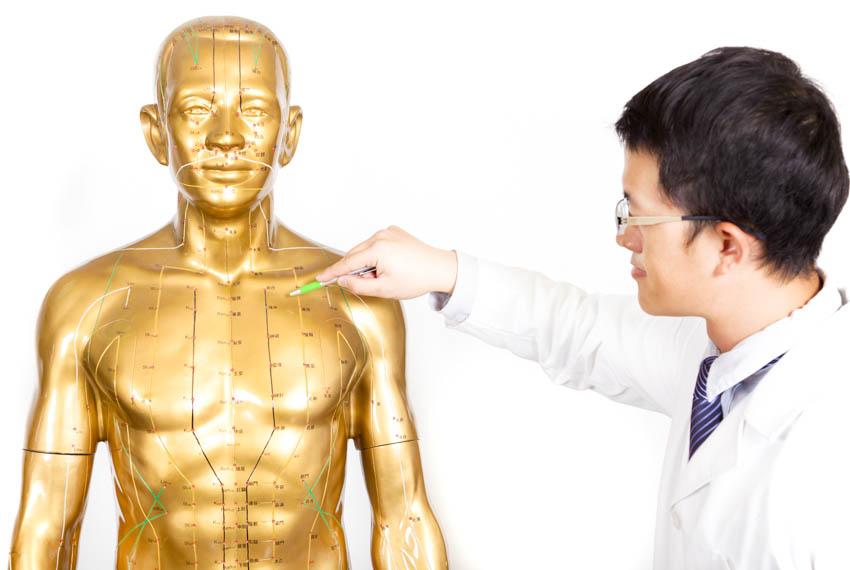
Acupuncture outperforms loratadine for the treatment of chronic urticaria (hives). In research conducted at the First Affiliated Hospital of Heilongjiang University of Chinese Medicine, acupuncture plus moxibustion produced an 89.66% total effective rate. Drug therapy using loratadine (an antihistamine) produced a 72.41% total effective rate. The results were measured with urticaria severity scores, indices of life quality, and serum levels of bioindicators at the completion of all medical treatments. [1]
Another set of measurements were made in a three-month follow-up for all patients in the study. The results indicate that acupuncture plus moxibustion has a lower relapse rate than drug therapy. Acupuncture had a 13.79% relapse rate and loratadine drug therapy had a 31.03% relapse rate. The researchers concluded that acupuncture combined with moxibustion is more effective than drug therapy in both the short and long-term.
A total of 58 patients with chronic urticaria were treated and evaluated in this study. All patients were diagnosed with chronic urticaria. They were randomly divided into an acupuncture plus moxibustion group and a drug group, with 29 patients in each group. The acupuncture plus moxibustion group received body acupuncture combined with ginger moxibustion. For the drug group patients, one 10 mg loratadine (brand names: Claritin, Allerclear) tablet was given to the patients daily. The drug treatment lasted for four weeks.
The statistical breakdown for each randomized group was as follows. The acupuncture plus moxibustion group was comprised of 14 males and 15 females. The average age in the acupuncture plus moxibustion group was 35.13 years. The average course of disease in the acupuncture plus moxibustion group was 12.45 months. The drug group was comprised of 13 males and 16 females. The average age in the drug group was 34.44 years. The average course of disease in the drug group was 11.87 months. There were no significant statistical differences in terms of gender, age, and course of disease relevant to patient outcome measures at the initiation of the investigation. All patients received administration of the following acupoints bilaterally:
- LI11 (Quchi)
- GB20 (Fengchi)
- LI4 (Hegu)
- CV17 (Danzhong)
- ST25 (Tianshu)
- LV3 (Taichong)
- SP10 (Xuehai)
- ST36 (Zusanli)
- SP6 (Sanyinjiao)
Acupuncture treatment commenced with patients in a supine position. After disinfection of the acupoint sites, a 0.30 mm × 40 mm disposable filiform needle was inserted into each acupoint with a high needle entry speed, reaching a depth of 10–20 mm. After achieving a deqi sensation, the needles were manually stimulated with Ping Bu Ping Xie (mild attenuating and tonifying) manipulation techniques every 10 minutes during the 30-minute needle retention time.
Next, ginger moxibustion was applied. Ginger was sliced into 3–4 mm pieces and placed on each acupoint. A mound of moxa was placed on the ginger and ignited. A total of three mounds were used for each acupoint. Acupuncture sessions were administered every Monday, Wednesday, and Friday of each week. The acupuncture and moxibustion treatment regimen lasted for four weeks.
Patients from both groups were advised to avoid raw, cold, spicy, and pungent foods during the treatment period. After treatment completion for patients in both groups, the treatment efficacy for each patient was categorized into 1 of 4 tiers:
- Recovery: SSRI (symptom score reduction index)*≥90%
- Significantly effective: 60%≤SSRI<90%
- Effective: 20%≤SSRI<60%
- Not effective: SSRI<20%
- *SSRI = (total scores before treatment-total scores after treatment) / total scores before treatment × 100%
Patients were evaluated before and after treatment. Both subjective and objective instruments were used to measure patient outcomes. First, urticaria severity was measured, including degrees of itching, the number and size of raised lumps, and characteristics of skin scratches. Second, indices of life quality was assessed, covering physiology, psychology, daily activities, sports, and social activities. Third, serum levels of total IgE, CCL26, and CCL27 were recorded.
IgE (Immunoglobulin E) is an antibody that can mediate the release of histamines. Prior investigations demonstrate that the detection of serum IgE is of great significance to early diagnosis and severity evaluation of patients with urticaria. [2, 3] CCL26 and CCL27 are chemokines that promote the release of histamines and participate in allergic reactions.
The total effective rate of the acupuncture plus moxibustion treatment group was significantly higher than that of the drug control group (p<0.05). Both groups demonstrated significant improvements in urticaria severity scores, indices of life quality, and IgE, CCL26, and CCL27 serum levels. Compared with the drug control group, the acupuncture plus moxibustion group produced better urticaria severity scores, index of life quality scores, and IgE, CCL26, and CCL27 serum levels (p<0.05). Statistical analyses of outcomes demonstrate that the acupuncture plus moxibustion group produced superior positive patient outcomes. In addition, acupuncture plus moxibustion produced lower relapse rates compared with the drug control group.
References:
[1] Zhang HL, Yin HN, Liu C. Clinical Effect and Immune Mechanism of Acupuncture Combined with Ginger-Padded Moxibustion Treating Urticaria of Cold Pattern [J]. Journal of Clinical Acupuncture and Moxibustion, 2018, 34(7):18–21.
[2] Wang L, Yu LZ, Liu JX, et al. Study on the Anti-type I Allergic Effect of Qufengzhiyang Granules and Its Mechanism[J]. Pharmacology and Clinics of Chinese Materia Medica, 2010, 26 (5): 103-104.
[3] Wen J, Chen BT, Lin ZF, et al. Effect of Xiaofeng Powder on Serum IgE Levels in Patients with Wind-cold Urticaria [J]. Journal of Chinese Medicinal Materials, 2008, 31 (12): 1930-1932.


